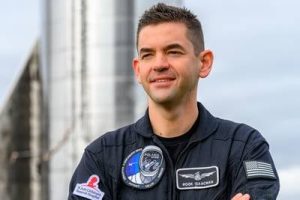AX-3 Returns to Earth After Successful Mission
The completion of the third private astronaut mission to the International Space Station marks another milestone in NASA’s push to foster commercial opportunities beyond Earth. Axiom Mission 3 (AX-3) concluded its journey with the safe return of its crew members, who landed off the coast of Daytona, Florida, on Friday.
Aboard the SpaceX Dragon spacecraft, astronauts Michael López-Alegría, Walter Villadei, Marcus Wandt, and Alper Gezeravci returned to Earth at 8:30 a.m. EST on February 9, 2024, after spending nearly 22 days in space, including 18 days aboard the ISS. Recovery teams on SpaceX vessels efficiently retrieved both the spacecraft and its occupants.
López-Alegría, now serving as the chief astronaut for Axiom Space, has an impressive track record, having commanded the crew of Axiom Mission 1 (Ax-1), the inaugural fully private mission to the ISS. His extensive experience includes five spaceflights, including missions on space shuttles and Soyuz spacecraft, where he notably served as commander of Expedition 14 on the ISS. With NASA records for the most extravehicular activities (EVA) and cumulative EVA time, López-Alegría’s contributions to space exploration are significant.
Walter Villadei brings a wealth of aviation experience to the team, having served as a flight engineer on various aircraft, including military jets like the Eurofighter Typhoon and the MB339. His operational involvement in missions such as Enduring Freedom and UNMEE underscores his proficiency in demanding environments.
As a former fighter pilot with the Turkish Air Force, Alper Gezeravcı adds 15 years of flying experience on multiple aircraft to the mission. His tenure as a captain with Turkish Airlines further solidifies his expertise in aviation operations.
Marcus Wandt’s background as a fighter pilot with the Swedish Air Force, coupled with his subsequent roles in tactical training and experimental test piloting, brings a unique perspective to the mission. His selection as a member of the European Space Agency (ESA) astronaut reserve reflects his standing in the aerospace community.
Phil McAlister, director of NASA’s commercial space division, emphasizes the significance of missions like AX-3 in expanding economic opportunities in low Earth orbit. By leveraging commercial partnerships, NASA aims to pave the way for future private space stations, opening doors for increased research and collaboration.
The AX-3 mission, sponsored by Axiom Space, aligns with NASA’s broader strategy to cultivate a robust commercial presence in orbit. Axiom’s plans to introduce inflatable modules to the ISS and establish privately owned space stations signal a new era of space exploration where public and private entities collaborate to advance scientific discovery.
Prior to AX-3, Axiom Space successfully conducted AX-2, commanded by Peggy Whitson, a pioneering figure in space exploration who holds numerous records for her time aboard the ISS. The Crew Dragon spacecraft used for AX-3, named Freedom, will undergo inspection and processing in Florida, where data from the mission will be analyzed.
Throughout AX-3, the astronauts conducted a diverse array of scientific experiments, underscoring the potential for private ventures to contribute meaningfully to space research. NASA’s support for private astronaut missions reflects a broader shift towards a commercial space economy, where the agency serves as one of many stakeholders.
The completion of AX-3 represents a significant step forward in NASA’s quest to democratize access to space and foster collaboration between public and private entities. By embracing commercial partnerships, NASA is laying the groundwork for a future where space exploration is more accessible, inclusive, and economically viable.





